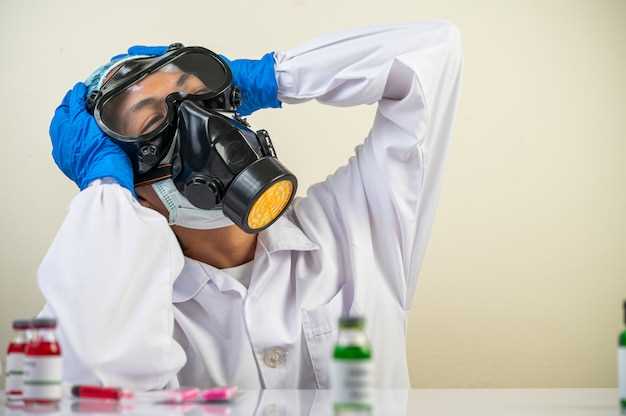
When it comes to working with substances that have the potential to cause harm, it is of utmost importance to prioritize safety. Whether in a laboratory setting or within various industries, the responsible handling of chemicals is crucial for the well-being of both individuals and the environment. By implementing effective safety measures and adhering to best practices, we can minimize the risks associated with working with hazardous substances.
Creating a culture of awareness and preparedness is the first step towards ensuring chemical safety. This involves educating personnel about the potential hazards associated with different substances and providing them with the necessary knowledge and skills to handle them safely. By fostering a sense of responsibility and accountability, individuals become more conscious of their actions and are better equipped to identify and mitigate potential risks.
Proper storage and labeling are essential components of chemical safety. Storing substances in designated areas that are well-ventilated and equipped with appropriate safety measures helps to prevent accidental exposure and minimize the potential for accidents. Additionally, clear and accurate labeling of containers allows for easy identification of the contents and ensures that individuals are aware of any specific precautions that need to be taken.
Importance of Chemical Safety
Ensuring the well-being and security of individuals working with substances and compounds is of utmost significance in various settings, including laboratories and industrial environments. The implementation of effective measures to protect against potential hazards and risks associated with chemical substances is crucial for maintaining a safe and healthy work environment.
Promoting Health and Preventing Accidents
One of the primary objectives of prioritizing chemical safety is to safeguard the health and well-being of individuals involved in handling and working with chemicals. By adhering to proper safety protocols and practices, the risk of accidents, injuries, and illnesses can be significantly reduced. This not only protects the individuals directly involved but also contributes to the overall productivity and efficiency of the workplace.
Preserving the Environment
Chemical safety practices also play a vital role in preserving the environment. By ensuring proper containment, storage, and disposal of hazardous substances, the potential for environmental contamination and pollution can be minimized. This is essential for maintaining the ecological balance and protecting natural resources for future generations.
Understanding Hazardous Chemicals
In the realm of chemical safety, it is crucial to have a comprehensive understanding of hazardous substances. These substances, which can be found in various settings such as laboratories and industrial facilities, pose potential risks to human health and the environment. By gaining knowledge about the characteristics, classifications, and potential hazards associated with these chemicals, individuals can effectively mitigate risks and ensure safety in their respective fields.
When dealing with hazardous chemicals, it is important to recognize that they encompass a wide range of substances with diverse properties. These substances can include flammable liquids, corrosive materials, toxic gases, and reactive compounds. Understanding the specific properties and behaviors of these chemicals is essential in order to handle them safely and prevent accidents or incidents.
- Characteristics: Hazardous chemicals can exhibit various characteristics, such as volatility, toxicity, and reactivity. Volatile chemicals have the ability to vaporize at room temperature, posing inhalation risks. Toxic chemicals can cause harm to living organisms, while reactive chemicals can undergo chemical reactions that release energy or produce hazardous byproducts.
- Classifications: Hazardous chemicals are classified based on their potential risks and properties. The Globally Harmonized System of Classification and Labelling of Chemicals (GHS) provides a standardized framework for classifying chemicals. This system categorizes chemicals into different classes, such as flammable, corrosive, toxic, and environmentally hazardous.
- Potential Hazards: Hazardous chemicals can pose a range of hazards, including fire and explosion risks, health hazards, and environmental hazards. Fire and explosion risks are associated with flammable and reactive chemicals, while health hazards can result from exposure to toxic substances. Environmental hazards can arise from the release of chemicals into the air, water, or soil, leading to pollution and ecological damage.
By understanding the characteristics, classifications, and potential hazards of hazardous chemicals, individuals can adopt appropriate safety measures and protocols. This includes implementing proper storage and handling procedures, using personal protective equipment, and conducting regular risk assessments. Additionally, education and training programs play a vital role in ensuring that individuals are equipped with the necessary knowledge and skills to handle hazardous chemicals safely.
In conclusion, a thorough understanding of hazardous chemicals is essential for maintaining safety in laboratory and industrial settings. By familiarizing themselves with the properties, classifications, and potential hazards of these substances, individuals can effectively mitigate risks and protect both human health and the environment.
Personal Protective Equipment (PPE) for Chemical Handling

Ensuring the well-being of individuals working with hazardous substances is of utmost importance in various settings, including laboratories and industrial environments. In order to safeguard against potential risks and promote a secure working environment, the utilization of Personal Protective Equipment (PPE) is crucial.
When handling substances that may pose potential harm, it is essential to equip oneself with appropriate protective gear. PPE serves as a shield, guarding against the harmful effects of chemicals and minimizing the risk of exposure. This equipment acts as a barrier, preventing direct contact with hazardous substances and reducing the likelihood of accidents or injuries.
Wearing the correct PPE not only provides physical protection but also instills a sense of confidence and reassurance in individuals working with chemicals. It serves as a visible reminder of the potential dangers present and emphasizes the importance of adhering to safety protocols. By donning the appropriate gear, individuals demonstrate their commitment to maintaining a safe and secure working environment.
Examples of PPE commonly used for chemical handling include gloves, goggles, face shields, lab coats, and respirators. Each of these items serves a specific purpose in safeguarding against different types of hazards. Gloves, for instance, shield the hands from direct contact with chemicals, while goggles and face shields protect the eyes and face from splashes or airborne particles.
It is crucial to select the appropriate PPE based on the specific nature of the chemicals being handled and the potential risks involved. Regular inspection and maintenance of PPE are also essential to ensure its effectiveness. Proper training on the correct usage, storage, and disposal of PPE should be provided to all individuals working with hazardous substances.
In conclusion, Personal Protective Equipment (PPE) plays a vital role in ensuring the safety of individuals handling chemicals. By providing a physical barrier against potential hazards, PPE promotes a secure working environment and reduces the risk of accidents or injuries. It is imperative to select the appropriate gear, regularly inspect and maintain it, and provide proper training to ensure its effectiveness.
Safe Storage and Handling of Chemicals
Ensuring the proper storage and handling of chemicals is crucial for maintaining a secure and controlled environment in both laboratory and industrial settings. This section focuses on best practices and guidelines to safely store and handle chemicals, minimizing the risk of accidents, contamination, and potential harm to individuals and the environment.
1. Storage Guidelines
- Segregate chemicals based on their compatibility to prevent reactions and potential hazards.
- Store chemicals in designated areas with appropriate ventilation, temperature control, and fire-resistant cabinets.
- Label all containers clearly with the chemical name, hazard symbols, and relevant safety information.
- Keep an inventory of chemicals, including their quantities, expiration dates, and storage locations.
- Regularly inspect storage areas for leaks, spills, and damaged containers.
2. Handling Procedures

- Wear appropriate personal protective equipment (PPE) such as gloves, goggles, and lab coats when handling chemicals.
- Follow established protocols and procedures for measuring, transferring, and mixing chemicals.
- Avoid direct contact with chemicals and always use proper tools, such as pipettes or tongs, for handling.
- Dispose of chemical waste according to local regulations and guidelines.
- Regularly clean and decontaminate work surfaces and equipment to prevent cross-contamination.
By adhering to these safe storage and handling practices, individuals can significantly reduce the risks associated with working with chemicals. It is essential to prioritize safety and maintain a proactive approach to ensure the well-being of everyone involved and protect the environment from potential harm.
Emergency Preparedness and Response
In the event of unforeseen circumstances or incidents, it is crucial to have a well-prepared and efficient plan in place to ensure the safety and well-being of individuals and the environment. This section focuses on the importance of emergency preparedness and response measures, highlighting the need for proactive strategies and effective coordination.
When unexpected situations arise, having a comprehensive emergency plan is essential. This plan should encompass various aspects, including risk assessment, hazard identification, and mitigation strategies. By anticipating potential emergencies and implementing preventive measures, organizations can minimize the impact of incidents and protect both personnel and the surrounding environment.
Emergency response procedures play a vital role in addressing and managing incidents effectively. These procedures involve prompt actions, such as evacuation, containment, and communication protocols, to ensure a swift and coordinated response. Training programs and drills are essential to familiarize individuals with these procedures, enabling them to act swiftly and confidently during emergencies.
Collaboration and communication are key elements in emergency preparedness and response. Establishing clear lines of communication between all stakeholders, including employees, emergency services, and relevant authorities, is crucial for effective coordination and timely response. Regular communication channels should be established to disseminate information, provide updates, and address any emerging concerns.
Continuous improvement and evaluation of emergency preparedness plans are essential to adapt to evolving risks and challenges. Regular reviews, audits, and feedback mechanisms help identify areas for improvement and ensure that emergency response strategies remain up-to-date and effective. By staying proactive and responsive, organizations can enhance their ability to handle emergencies and safeguard the well-being of all involved.
Training and Education for Chemical Safety
In order to ensure the well-being of individuals working with hazardous substances and to minimize the potential risks associated with their handling, it is crucial to prioritize training and education in the field of chemical safety. By equipping individuals with the necessary knowledge and skills, they can effectively identify and mitigate potential hazards, implement appropriate safety measures, and respond to emergencies in a timely manner.
Enhancing Awareness and Understanding
One of the key objectives of training and education for chemical safety is to enhance awareness and understanding of the potential risks and hazards associated with the use and handling of chemicals. This involves educating individuals about the properties of different substances, their potential health effects, and the appropriate safety precautions that need to be taken. By fostering a comprehensive understanding of chemical safety, individuals can make informed decisions and take proactive measures to protect themselves and others.
Developing Practical Skills
Training programs also focus on developing practical skills that are essential for ensuring chemical safety. This includes teaching individuals how to properly handle, store, and dispose of hazardous substances, as well as how to use personal protective equipment effectively. Additionally, training may cover emergency response procedures, such as how to contain spills, administer first aid, and evacuate the area safely. By honing these skills, individuals can confidently navigate potential risks and contribute to a safer working environment.
In conclusion, training and education play a vital role in promoting chemical safety. By increasing awareness, understanding, and practical skills, individuals can effectively mitigate risks and ensure the well-being of themselves and others in various laboratory and industrial settings.

Leave a Reply